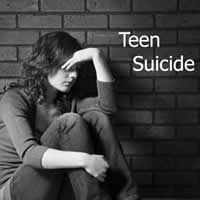Difference between Suicide and Euthanasia
Key difference: Suicide is the act of intentionally taking one’s own life. Euthanasia is the practice of intentionally ending somebody’s life in order to relieve pain and suffering.
 According to Merriam-Webster, suicide is the “act or an instance of taking one's own life voluntarily and intentionally especially by a person of years of discretion and of sound mind.” Suicide is derived from the Latin ‘suicidium’, from ‘sui caedere’, which means “to kill oneself.”
According to Merriam-Webster, suicide is the “act or an instance of taking one's own life voluntarily and intentionally especially by a person of years of discretion and of sound mind.” Suicide is derived from the Latin ‘suicidium’, from ‘sui caedere’, which means “to kill oneself.”
Suicide is the act of intentionally taking one’s own life. It is often committed out of despair, due to stress factors such as financial difficulties, unhappiness with life or love. It may also be due to a mental disorder such as depression, bipolar disorder, schizophrenia, alcoholism, or drug abuse.
The World Health Organization (WHO) estimates that it is the 13th leading cause of death worldwide. Over one million people die by suicide every year. It is estimated that there are yearly 10 to 20 million non-fatal attempted suicides worldwide. It is a leading cause of death among teenagers and adults under 35. Also, men are three to four times more likely to attempt suicides than females. There are a number of suicide prevention helplines and organizations, which aim to help people to deal with thoughts of suicide and suicidal tendencies.
Merriam-Webster defines euthanasia as, “the act or practice of killing or permitting the death of hopelessly sick or injured individuals in a relatively painless way for reasons of mercy.” Euthanasia is derived from the Greek ‘euthanatos’, from eu (well or good) + thanatos (death), meaning easy death.
Euthanasia is basically the practice of intentionally ending a life in order to relieve them from pain and suffering. It is also often referred to as one’s choice to live in a dignified manner by many pro-euthanasia activists. Euthanasia can be categorized in different ways, which include voluntary, non-voluntary, or involuntary. Voluntary, non-voluntary and involuntary euthanasia can all be further divided into passive or active euthanasia.

Voluntary euthanasia is also referred to as "assisted suicide." It is when one helps somebody who is sick and suffering, to take their own life. Passive voluntary euthanasia is when one is on life support and asks to be taken off the life support, so that they may die rather then endure the pain of living. Passive euthanasia is essentially the withholding of common treatments, such as antibiotics, which are necessary for the continuance of life. Active voluntary euthanasia is when a person asks for drugs or supplement to kill themselves, so that they may not suffer the pain. This is most common in people suffering from chronic illnesses.
Non-voluntary euthanasia (sometimes known as mercy killing) is euthanasia conducted where the explicit consent of the individual concerned is unavailable, such as when the person is in a persistent vegetative state. In cases of non-voluntary euthanasia, the family, spouse, or legal representative takes the decision to take the person off the life support (passive euthanasia) or to give them a lethal injection to end their life (active euthanasia.)
Involuntary euthanasia occurs when euthanasia is performed on a person who is able to provide informed consent, but does not, either because they do not choose to die, or because they were not asked. In most cases, this is considered as murder, as the person did not have a choice or knowledge of the ending of their life.
Both suicide and euthanasia are controversial topics. Many religions, such as Christianity, Islam and Judaism, consider suicide and euthanasia as an offense towards God, as they believe that only God has the right and power to give life and take it away. Due to this reasoning, suicide is often regarded as a serious crime, even in modern Western thought. In some countries, a failed suicide attempt is considered punishable by law. Passive voluntary euthanasia is considered as legal in some countries and in some US states. These laws were implemented mainly due to activists protesting a person’s choice to live and die in dignity. Non-voluntary euthanasia and involuntary euthanasia are illegal in all countries.
Image Courtesy: teensuicideprevention.org, kannada.oneindia.in









Add new comment